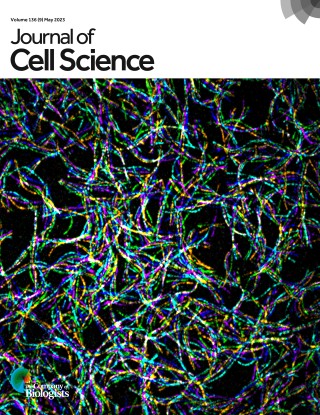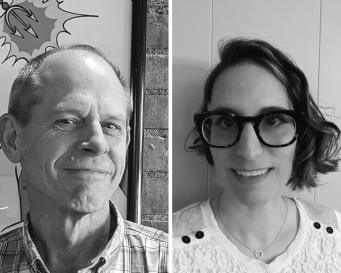New Process for Isolating Actin from Yeast Opens Doors for Protein Studies
Actin, a crucial protein involved in various cellular functions, has predominantly been studied using actin synthesized from muscle cells. However, this approach neglects the diversity of actin present in different (non-muscle) cell types. Understanding the potential variations in actin behavior is essential for unraveling cellular processes and diseases. To address this challenge, a team of researchers at Upstate developed a novel process for isolating actin from budding yeast, a widely-used model organism in the field of actin research.

An article on a new process for isolating actin makes the cover of the May 2023 issue of the Journal of Cell Science.
“So there's a big problem with studying some protein,” explains Jessica Henty-Ridilla, PhD, Assistant Professor at Upstate Medical University. “When scientists study actin, the default has been actin synthesized from muscle cells. The problem is, not all cells have this muscle actin.”
“We've been studying actin for a long time,” says Brian Haarer, PhD, who is the lead author of the paper. He has been working for years on this research with Dave Amberg, PhD; who is currently the Vice President for Research at Upstate. “We were concerned that everybody is using rabbit muscle actin because we knew that yeast proteins didn’t interact with muscle actin well.” He and Amberg worked for a while creating a tool to extract different strains of actin from yeast; putting the project on hold for a while during COVID. “Jess [Henty-Ridilla] is responsible for encouraging us to publish this work by providing so many beautiful tools to validate the actin that we made, and I think that was critical.”
Budding yeast offers several advantages for actin studies, including the presence of only a single type of actin, which simplifies the experimental setup. By examining the differences in behavior between isoforms, scientists hope to gain a better understanding of their distinct roles in various cells and diseases.
Why is improving the study of actin so important for researchers? “Most of the cells in our body rely on actin to do a whole lot of things,” explains Haarer. “A lot of different labs study the regulators of processes that use actin, so now we can more carefully analyze how those proteins work.”
“How your cells move around and divide or reproduce? It’s all actin,” adds Henty-Ridilla. “Exactly how actin functions has important implications for a disease like cancer because if you move too fast or to the wrong place, that’s not a good thing most of the time. But at the same time, it’s important for the development of your organs to be in the right place and orientation. Actin is very precisely controlled.”
The researchers also emphasized the significance of studying actin to help understand various diseases. For instance, understanding how actin regulates neuron function is crucial for addressing conditions such as ALS (amyotrophic lateral sclerosis) and hearing loss; an endeavor “near and dear to my heart,” says Haarer. By investigating the precise mechanisms of actin in different cell types, researchers aim to identify potential therapeutic targets and develop interventions to combat these diseases.

Brian Haarer, PhD (left) and Jessica Henty-Ridilla, PhD (right) discuss the paper published in the May 2023 edition of Journal of Cell Science outlining their process of isolating actin from yeast.
Another benefit to their process? “There’s a familiarity with this tool,” explains Henty-Ridilla. Many labs already work extensively with budding yeast, making the adoption of the technique relatively straightforward. Now, researchers can analyze how specific proteins interact with different actin isoforms in a more controlled and precise manner.
This paper was authored by several SUNY Upstate researchers along with Haarer and Henty-Ridilla including PhD candidate Morgan Pimm, Ebbing De Jong, PhD, and Dave Amberg, PhD. You can read their full article; the cover story for the May 2023 issue of the Journal of Cell Science, here.